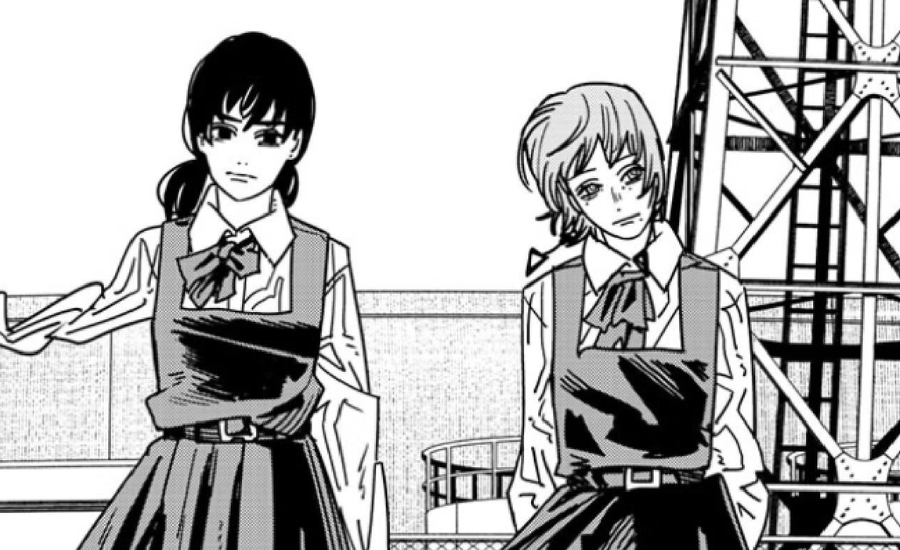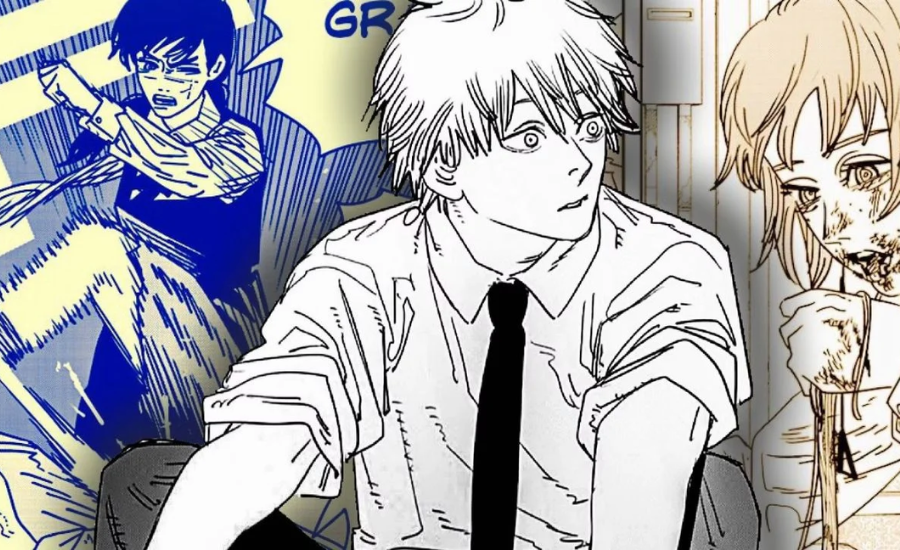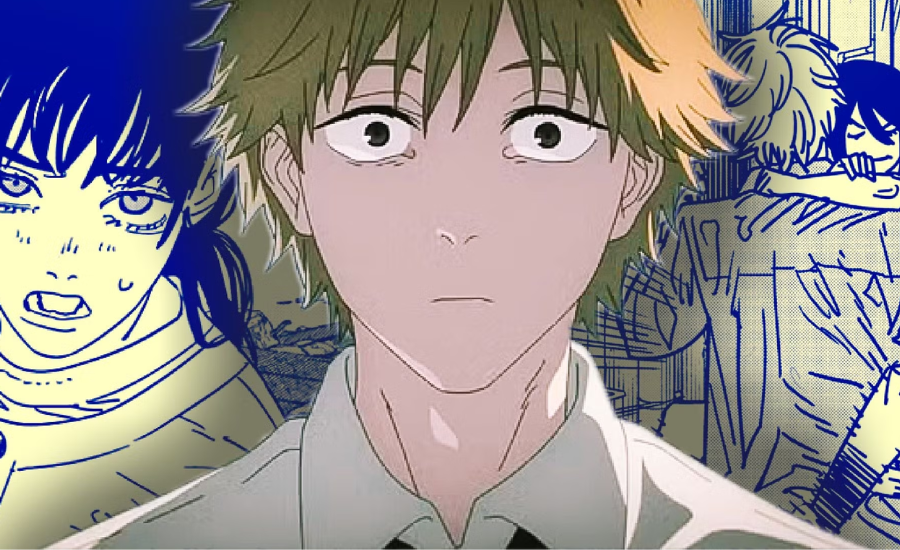The manga and anime landscape is vast, brimming with rich stories and memorable characters that leave a lasting impression. Among these, “Chainsaw Man” has distinguished itself, resonating with a global audience due to its unique mix of dark themes, intense action, and emotional complexity. This series has sparked widespread conversation in fan communities, where enthusiasts eagerly dissect its layered storytelling and character arcs. Recently, the focus has shifted to csm 163, a turning point filled with significant developments that deepen the narrative and enhance the relationships among characters. As fans delve into the twists and surprises of this chapter, they’re left wondering how these events will shape the story’s future direction.
For fans of manga and anime, particularly those invested in “Chainsaw Man,” these recent developments offer a wealth of insight and excitement. Csm 163 serves as a compelling moment, whether for seasoned readers or newcomers drawn by the series’ growing popularity. This analysis seeks to offer a thorough exploration of the critical moments and unfolding chaos in this part of the narrative, revealing layers that make “Chainsaw Man” a standout in the genre. From emotional stakes to evolving character dynamics, csm 163 encapsulates the captivating blend of suspense and depth that has come to define this story, leaving fans eager for what lies ahead.
Haruka’s Disillusionment and the Media’s Focus in CSM 163

In CSM 163, the distinction between reality and illusion becomes indistinct, creating a tense atmosphere for the characters as they navigate their experiences. Haruka, anticipating his group’s recent actions to make waves, instead faces a harsh reality check when he learns that the media’s attention is fixated on Koma Komagawa, a prominent reporter and idol, leaving Haruka’s efforts unnoticed. This shift in focus stirs feelings of frustration and doubt, as Haruka questions whether his contributions to the Chainsaw Man Church have any impact at all. The lack of acknowledgment challenges his sense of purpose, forcing him to reevaluate his significance within the bigger picture, and amplifying the story’s themes of personal validation and societal recognition.
Asa’s Battle with Identity and Recognition
Asa, once a revered Devil Hunter, now wrestles with fading popularity and a shifting self-image after suffering the loss of her arm. This change not only marks a physical transformation but also triggers an identity crisis, as Asa confronts her place in a world that seems to have moved on. Her struggle to come to terms with her new self parallels the series’ exploration of the transient nature of fame and societal appreciation. Through Asa’s journey, the narrative subtly comments on how quickly people can fall out of public favor and the internal challenges that accompany such rapid shifts in recognition. Asa’s turmoil in csm 163 underscores the themes of self-worth and the quest for personal validation in the face of public indifference.
Denji’s Painful Confrontation with Reality
Denji, the story’s main protagonist, faces his own sobering realities in csm 163, where physical pain merges with emotional confrontation. A brutal encounter with Katana Man, seeking retribution for their past conflict, is a vivid reminder of the ongoing challenges Denji must endure. Despite the surreal quality of his surroundings, Denji’s realisation that these events are no dream brings a grounded seriousness to his story arc, making the stakes feel all too real. This chapter intensifies the narrative’s focus on resilience and the inescapable confrontations with the past, emphasising the high stakes that Denji and others must navigate. Through Denji’s struggles, the story captures a raw sense of persistence and the burdens tied to his journey.
The Rise of a New Antagonist and the Chainsaw Man Church in CSM 163

In csm 163, a powerful new antagonist, Koma Komagawa, emerges alongside the unsettling rise of the Chainsaw Man Church. This organisation brings turmoil as countless individuals begin transforming into Devils under Koma’s influence, creating a landscape of chaos and uncertainty. Koma, with her status as both a charismatic idol and a persuasive media figure, becomes a complex villain who manipulates her platform to push the Church’s dark agenda forward. Her control over public perception amplifies the Church’s impact, turning societal norms on their head and posing a new threat that destabilised the characters’ sense of security and purpose.
The Social Consequences of Devil Transformations
As the Chainsaw Man Church grows, its influence reaches deep into society, leading to widespread Devil transformations that reflect a symbolic erosion of humanity. This shift challenges not only the individual identities of those affected but also the broader societal values that hold communities together. The transformation process forces characters and society at large to confront the pervasive impact of external forces on personal identity, sparking questions around the vulnerability of human nature. In csm 163, these transformations highlight the stark consequences of unchecked influence and manipulation, adding a new dimension of tension as characters grapple with a world where humanity is slipping away.
Themes of Control, Free Will, and the Nature of Evil
The expanding power of the Chainsaw Man Church in csm 163 raises profound questions about the boundaries of free will, the complexities of control, and the nature of evil. As individuals increasingly lose autonomy under the Church’s reach, the narrative underscores how easily society can be shaped by persuasive, charismatic leaders with malicious intentions. The Church’s activities press the characters into questioning their agency and morality, blurring the lines between personal choice and manipulation. This chapter brings forward the struggle against oppressive forces, adding depth to the story as characters navigate these philosophical dilemmas amidst escalating threats.
Personal Struggles and Group Tensions in CSM 163

In csm 163, the group dynamic becomes more complex as each member grapples with unique challenges that shape their decisions and interactions. Haruka’s realisation that their actions may be insignificant hits him hard, shaking his self-assurance and pushing him to question his purpose within the group. Meanwhile, Asa finds herself in a personal crisis, struggling with identity and seeking validation amidst the chaos that surrounds them. This internal search affects her behaviour with the group, creating subtle shifts in how she relates to others as she seeks meaning and a sense of place within the disarray.
Denji’s Conflict and the Fractured Alliances
Denji’s ongoing battles, both physical and emotional, add a palpable tension to the group’s interactions. His recent confrontation with Katana Man leaves him visibly shaken, while Yoru’s dismissive view of his human side highlights the strained alliances and emerging loyalties within the group. Yoru’s pragmatism, with a focus on strength rather than sentiment, reveals the group’s divided approach to survival. This difference in values underscores the growing rift in their unity, as each member weighs the importance of power, loyalty, and the bonds they share.
Nobana’s Fear and the Struggle for Cohesion
Nobana’s apprehensions about their safety add further strain to the already tenuous group dynamic. Her instinct to prioritise security clashes with Haruka’s desire to strengthen solidarity, leading to intense discussions about their next moves. These internal disagreements bring forward a theme of survival in csm 163, as the group tries to navigate a world on the verge of collapse. Together, these interpersonal conflicts and contrasting priorities highlight the fragile nature of their alliance, revealing how survival instincts can fracture even the closest of ties when faced with overwhelming adversity.
Balancing Safety and Unity in CSM 163
In csm 163, the group finds itself divided on their next steps, as they face both external threats and internal conflict. The tension centres around whether to prioritise safety or unity, with Haruka pushing for the group to stay together, believing their strength lies in solidarity. However, Nobana’s increasing anxiety about the risks they face highlights a different perspective, one that questions if sticking together may actually make them more vulnerable. This split reveals a clash of instincts: one rooted in collective strength, and the other driven by survival and caution.
Weighing Personal Goals Against Group Survival
The limited options before them force each member to confront their priorities, as every decision they make carries heavy consequences. This dilemma echoes the broader theme of choice and consequence that permeates Chainsaw Man. Each character must balance their personal goals, fears, and ideals with what’s best for the group as a whole. For Haruka, staying united is essential, but Obama’s focus on safety suggests a more individualistic approach, bringing forward the difficult balancing act they all face between personal survival and collective welfare.
Navigating Difficult Choices in a High-Stakes World
As they grapple with this challenging decision in csm 163, the characters’ inner conflicts reflect the high-stakes nature of their world, where every choice could have life-altering effects. Their struggle highlights the sacrifices and compromises required to navigate their harsh reality, where the cost of each decision is magnified by the risks surrounding them. Ultimately, this chapter underlines how crucial these choices are—not only for their survival but also for their relationships and sense of self—as they face a world filled with threats and uncertainty.
Interesting facts
- New Antagonist Koma Komagawa – In CSM 163, the arrival of Koma Komagawa as a key antagonist introduces fresh tension, as she leads the Chainsaw Man Church and brings a wave of chaos to society.
- The Chainsaw Man Church’s Influence – Under Koma’s guidance, the Chainsaw Man Church gains significant power, encouraging transformations into Devils, which challenges societal norms and personal identities.
- Haruka’s Disillusionment – Haruka experiences frustration and self-doubt when his actions go unnoticed by the media, which instead focuses on Koma, causing him to question his impact and role within the group.
- Asa’s Identity Crisis – Asa, a former Devil Hunter, grapples with her fading popularity and a profound identity crisis after losing her arm, symbolising her struggle with personal worth and societal validation.
- Denji’s Harsh Reality – Denji faces a painful confrontation with Katana Man, blending physical and emotional turmoil as he confronts the brutal realities of his journey.
- Symbolism in Devil Transformations – The rise in Devil transformations, driven by the Chainsaw Man Church, serves as a metaphor for societal manipulation and the potential loss of human identity.
- Themes of Free Will and Control – CSM 163 delves into complex themes of control, free will, and the nature of evil, with characters questioning their agency as the Church’s influence expands.
- Internal Group Conflicts – The chapter explores internal group tensions, as members disagree on whether to prioritise safety or unity, highlighting the struggle to maintain cohesion in the face of overwhelming adversity.
FAQs
Q1: What makes CSM 163 a significant chapter in Chainsaw Man?
A: CSM 163 marks a pivotal moment in the Chainsaw Man series, with major character developments, internal group conflicts, and the introduction of new antagonists, which all deepen the storyline and intensify character dynamics.
Q2: How does Haruka’s storyline evolve in this chapter?
A: In CSM 163, Haruka faces disillusionment as he realises that his contributions are overshadowed by the media’s focus on Koma Komagawa. This lack of recognition leads him to question his significance within the Chainsaw Man Church.
Q3: What challenges does Asa face in CSM 163?
A: Asa struggles with an identity crisis after losing her arm, dealing with both a physical transformation and diminishing popularity. This personal conflict explores themes of self-worth and societal recognition.
Q4: What is the role of the Chainsaw Man Church in this chapter?
A: The Chainsaw Man Church emerges as a destabilising force, led by the manipulative Koma Komagawa. It influences many characters and society at large, causing widespread Devil transformations and challenging individual autonomy.
Q5: What themes are explored through the group’s internal conflicts?
A: The group faces tension between prioritising safety versus solidarity, weighing personal goals against the collective good. This reflects larger themes of survival, sacrifice, and the impact of individual decisions on group cohesion.
Q6: How does Denji’s confrontation with Katana Man affect his character?
A: Denji’s intense fight with Katana Man and the dismissal he faces from Yoru underline his physical and emotional burdens. His experiences showcase themes of resilience and the inescapable impact of past conflicts.
Conclusion
In conclusion, CSM 163 serves as a crucial chapter in Chainsaw Man, amplifying the story’s themes of personal struggle, survival, and complex group dynamics. The characters face tough choices that test their values and relationships, while external threats from the Chainsaw Man Church add layers of societal tension and ethical challenges. This chapter not only deepens individual arcs but also raises compelling questions about resilience, identity, and the cost of loyalty, leaving fans eager to see how these evolving conflicts will shape the series’ future.
Stay In Touch For More Updates And Alerts: Head Lines



